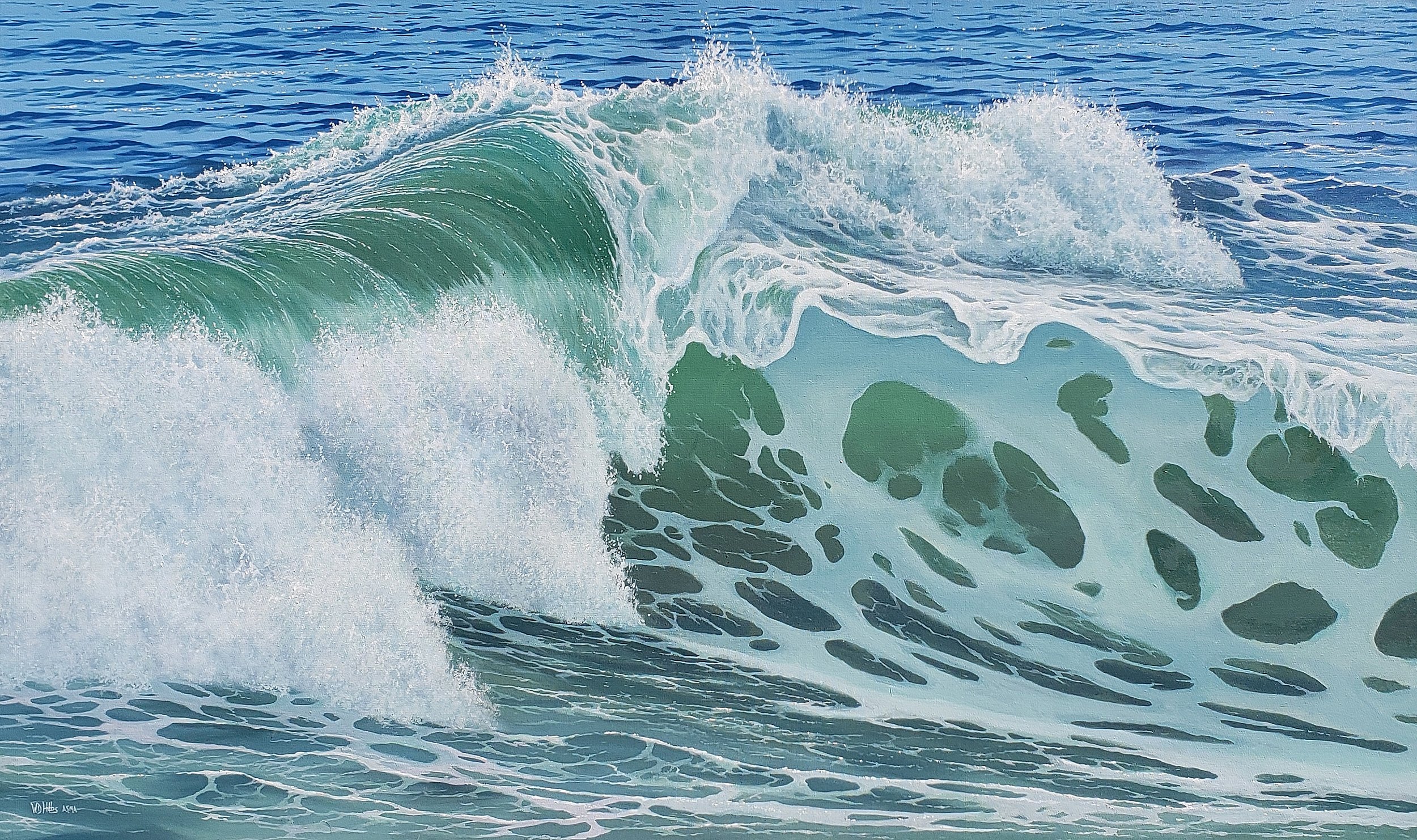
William Hobbs
Early Morning Break, 24x48
Enduring Motion, 36x60
Morning Dance, 36x72
Clear Break, 20x60
In a Curling Wave, 24x72
Narragansett Dawn, 30x40
Convergence, 36x60
Patterns of Serenity, 30x40
Dawn's Glow, 24x36
Three Whale Boats, 48x48
Rising Clarity, 20x60
Morning Dance, 36x72
Dawn, 12x24
Bright Morning, 36x72
Morning's Gold, 12x24
Light Upon the Crest of a Wave, 24x48
Cloud Break, 30x30
Morning Rising, 36x72
Break and Plunge, 12x36
Dawn Surf, 12x36
Dawn Subtlety, 12x36
Upon the Beach at Dawn, 30x15
Newport Rocks, 20x30
Morning Calm, 15x30
Summer Surf, 24x36
Refreshing Dynamics, 24x24
Colors of Dawn, 20x30
Summer's Evening, 24x30
Receding Tide, 30x40
Early Clearing, 30x30
Heavy Surf Off Beavertail Light, 18x36
Rising in the Morning, 24x72
Breaking Into Shallow Surf, 36x70
Early Morning Surf, 36x72
Late Morning Break, 36x72
Bright Morning Break, 36x72
Within the Wave, 36x60
Rejuvenating Motion, 36x48
The 19th century saw the development of great American landscape and seascape traditions. Spreading out from the Catskill region of New York, this style of powerful realism became known as the Hudson River School. It is upon these historic foundations that William Hobbs grounds his painting style, envisioning it as a continuation and extension of their endeavors. Following in the traditions of Frederick Church and Albert Bierstadt, his paintings explore the power of the natural world.
The natural content of Hobbs' work is driven by a fascination for wilderness. As an avid hiker, backpacker, and water-sport enthusiast, his art grows out of countless hours observing in the field. Further, his graduate level education and research in biology and ecology informs his art. His paintings are both scientific studies and artistic renderings. Hobbs sees no difference between the two. In the deepest of scientific explorations, he finds aesthetic beauty. His art is a process in which he interacts with and explores the intricacies of nature. Moving water is a common theme in his paintings. From crashing surf and the rolling waves of the sea, to the flow of forest streams and waterfalls, these paintings often explore the patterns of water in motion. It is his desire that these studies impress upon the viewer a wonder for nature and the God who developed it. Hobbs believes wonder is the heart motivation for productive admiration and protection of the natural world.
Hobbs' artistic style has become known for detail. He is most inspired by nature's complexity and thrives on exploring the intricate detail of the natural world in his paintings. Finding nature to be fascinating at every scale, he seeks to create paintings that can be appreciated up close as well as from a distance. He renders these scenes in oils on canvas. He appreciates the permanence of oils and finds this time-tested media to be the best method to capture the facets of nature that intrigue him.
William Hobbs studied and painted for a number of years along the coast of New England, where he was active in the Seacoast Art Association of New Hampshire. He now paints from his home in northeastern Pennsylvania where he is associated with the Pocono Mountains Arts Council. His art is represented in a wide range of private and Corporate collections throughout the United States as well as in Germany and France, including the collections of Sanofi Pasteur, Portland Steel, and the Weiler Corporation. Hobbs paintings have won many awards and he exhibits in a growing number of shows and galleries. It is the artist's hope that the viewer will discover in his paintings, the bright optimism of a world full of the life and motion that inspire me.






































